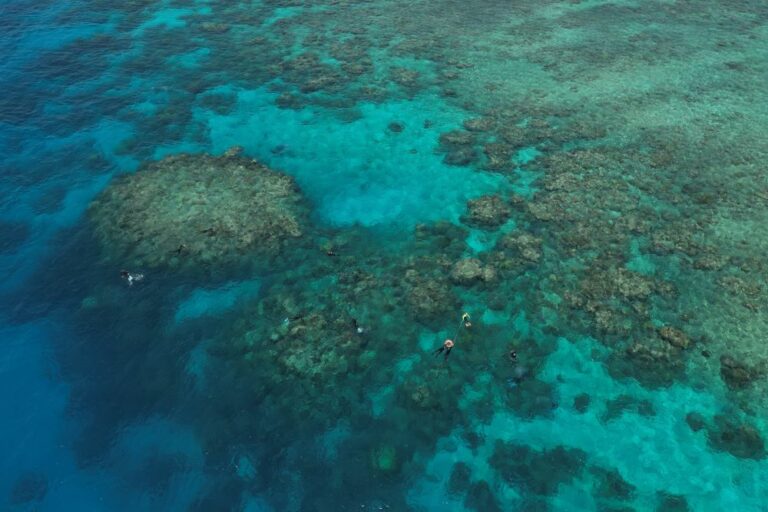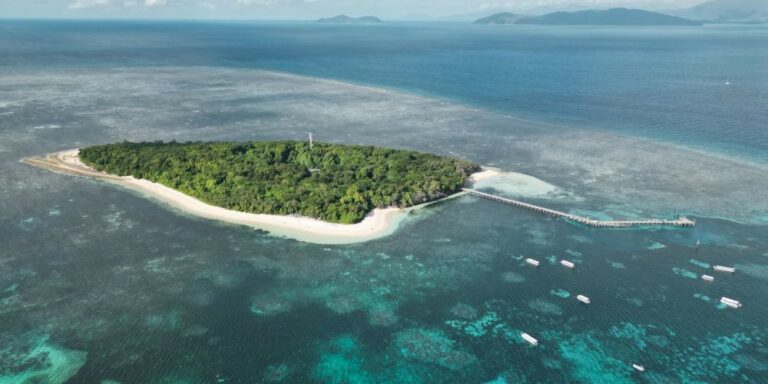Norman Reef Snorkel
LOCATION Great Barrier Reef, Cairns Queensland
DEPTH 1-30 Meters
WATER TEMP 24-30 Degrees
DIFFICULTY Easy to Medium
A number of sites are available on Norman Reef and the tour operator will select the best site to minimise the currents and swell.
FEATURE

Google Map data © 2024 Imagery © CNES / Airbus, Maxar Technologies
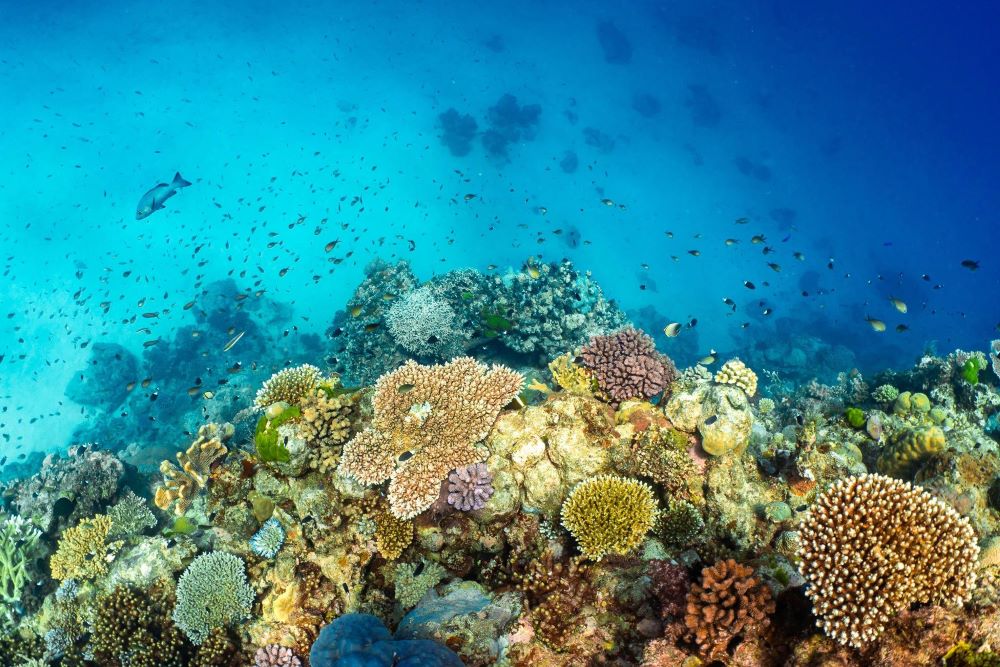
Norman Reef – Great Barrier Reef
Norman Reef is the most northern reef visited by reef tour companies from Cairns and has a number of snorkel sites located off its sheltered western side. Located on the outer edge of the reef, Norman Reef is known for its clear water and a wonderful range of marine life.
What Can I See?
- Coral Reef
- Stingrays
- Octopus
- Turtles
- Reef Sharks
- Clown Fish
- Tropical Fish
- Manta Rays (Occassional)
- Humpback Whales (Rare)
Getting There?
Norman Reef is located about 70km or 1.5 hour boat ride off of the Cairns Coast. You will need a private boat or can take a tour to Norman Reef. If in a private boat, there is only one public mooring on Norman Reef and is a fair distance from these sites so prior preparation is required.
If you book a trip with a reef tour operator, it is important to know the moorings are owned by Divers Den, so they are most likely to visit. However the other operators known to visit these Norman Reef sites are Tusa Reef Tours and Reef Experience.
Best Season
Best time to snorkel is September-January with winter trade winds easing, you will on average experience calmer seas and better visibility (12-25m). Waters will also be warmer averaging between 27-29 degrees. The downside to snorkelling in summer is chance of cyclones, dangerous stingers and high humidity & rainfall on land.
Snorkelling is also possible in winter, however winds tend to average between 15-25 knots bringing waves and poorer visibility (8-12m). Waters are colder averaging between 23-26 degrees. The benefit of snorkelling in winter is less rain onshore, lower humidity, and no stingers. It is best to snorkel on days with 15 knots of wind or less.
Potential Hazards
- Depending on the conditions and the vessel. Seasickness can occur and it is best to take preventative medication.
- Stingers may be present.
- Guides will advise on any currents to be aware of.
Recommended Gear
Gear hire and stinger suits will be available from the tour operator if required.
How Busy / Crowds
Only one boat is able to visit each site at a time, depending on the reef operator you may share the vessel with up to 100 other people. However the broader Norman Reef has multiple moorings and you may see other operators and their customers on neighbouring sites.
Parking
Paid parking is available near the Cairns Marina.
Costs / Permits
Reef Tours vary from $200-450 for a day trip, and often leave Cairns at 8:00 and return around 4.30pm. The trips include lunch, snorkelling equipment and experienced crew. Some tours include complimentary snorkelling guides.
The information for each snorkel spot is provided by people who have snorkelled there. However, snorkelling conditions change daily. Please be aware that wind, swell, tides and cloud cover can all affect visibility and your experience in the water.
Disclosure: Please Note That Some Links In This Post May Be Affiliate Links, And At No Additional Cost To You, We Earn A Small Commission If You Make A Purchase. Commissions Go Toward Maintaining The Snorkel Spots Website.
Tours to Norman Reef
Best Conditions
It is best to snorkel after a period with no rain. It is best to snorkel on days with small changes in tides, with big tides bringing stronger currents.
Windy Map Instructions – Click on the icon in the top right to see other conditions such as swell, temperature, rain etc
Facilities
Tour boat facilities will vary depending on the tour company.

Toilets

Parking

Shade

Food & Drinks
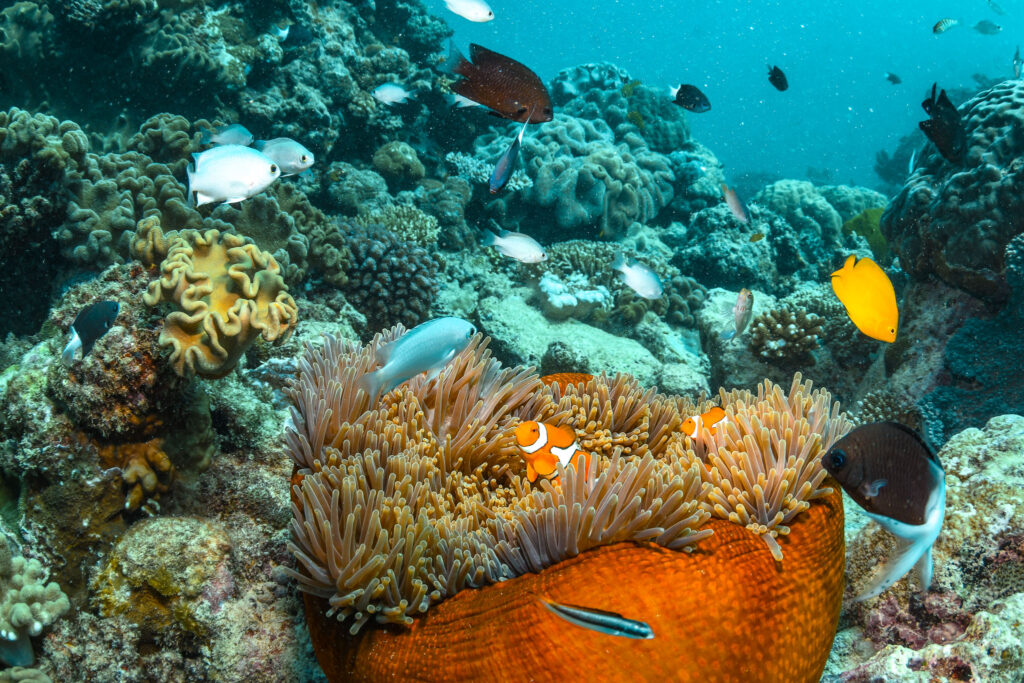
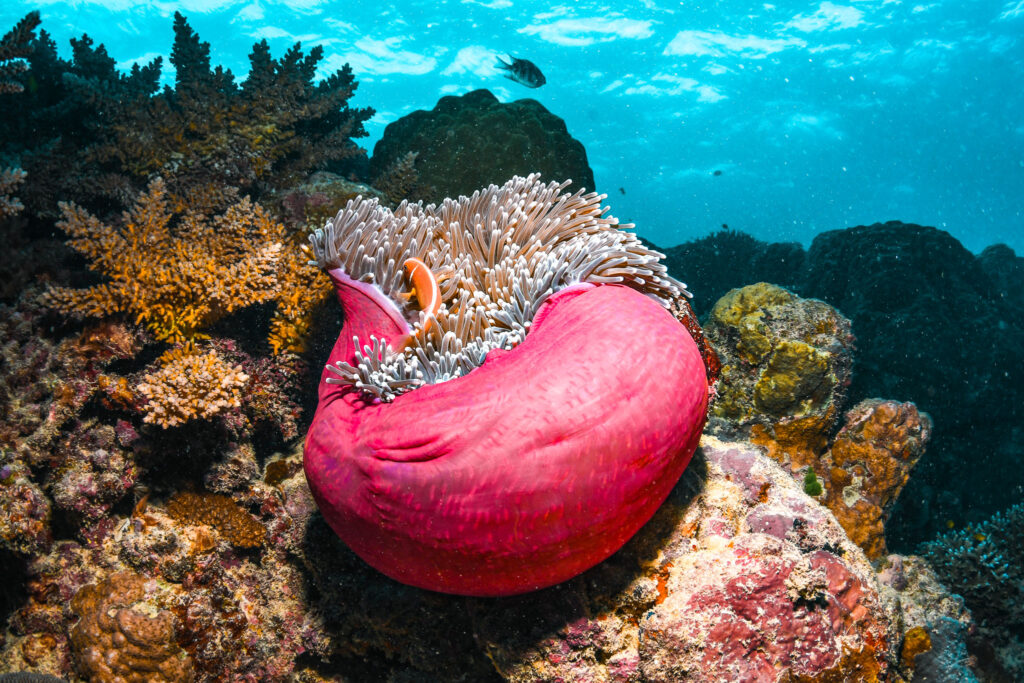
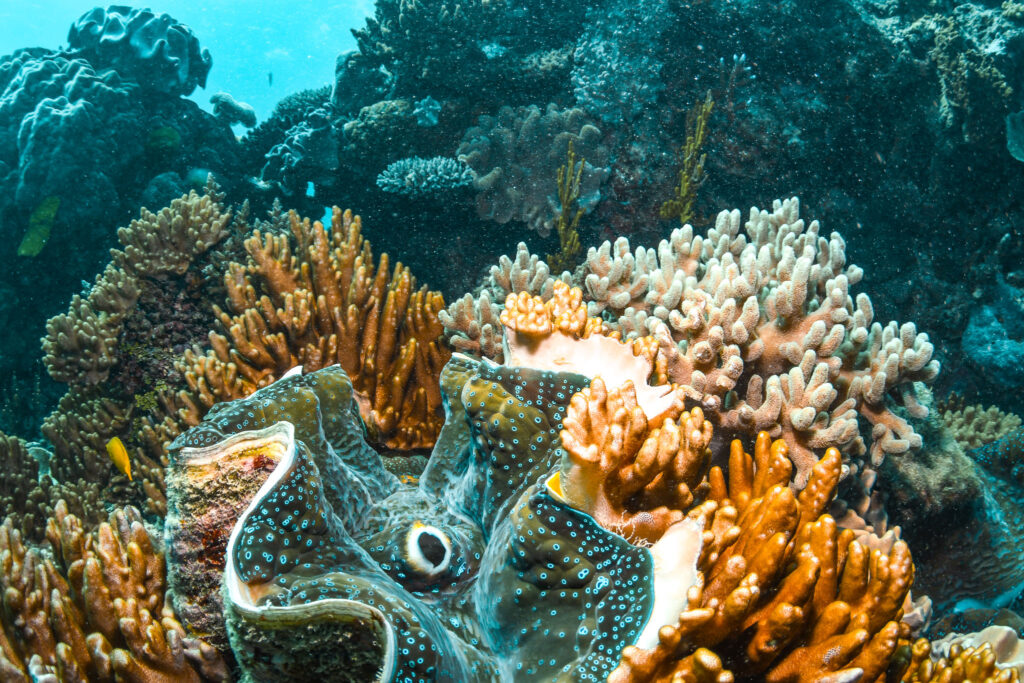
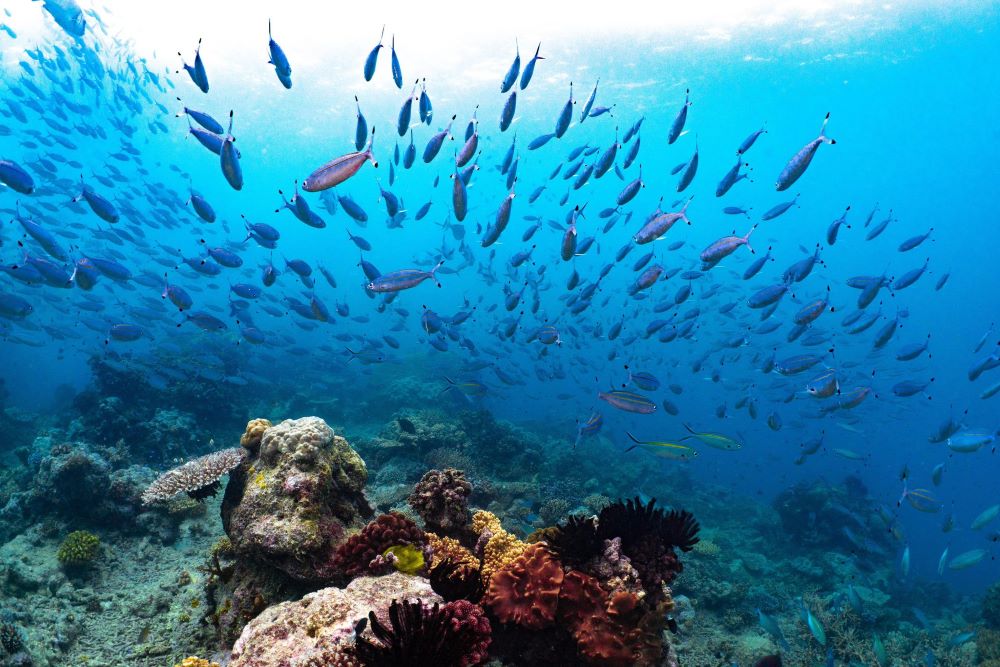
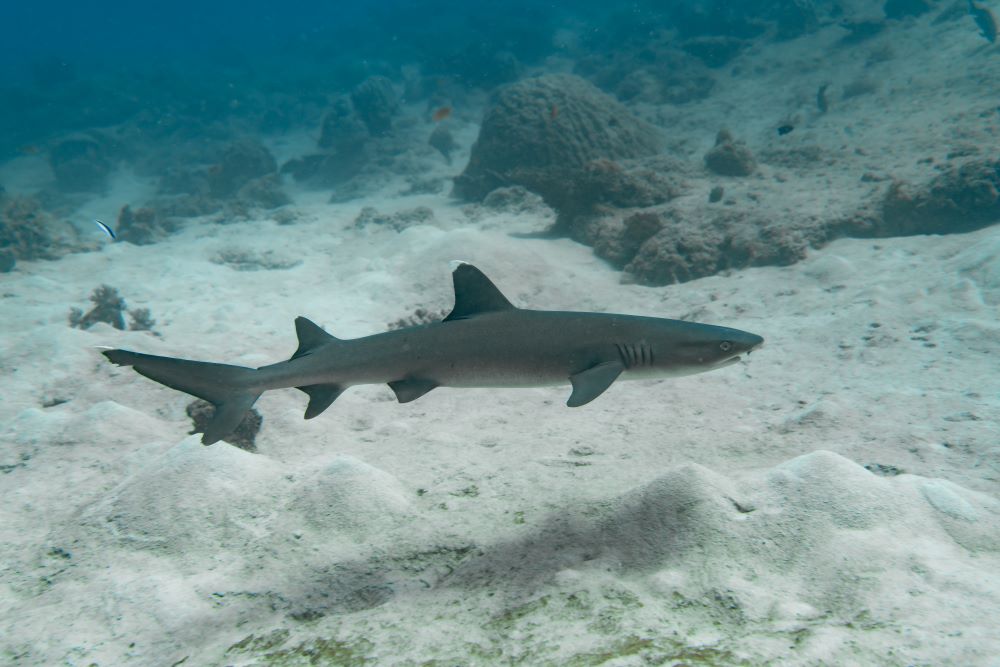
Norman Reef – Plate Top Site
Plate Top Site is named after a large, elongated bommie positioned just off the main reef structure. The bommie is covered in spectacular plate corals and therefore known as Plate Top. The main reef is also spectacular with healthy and plentiful coral cover and marine life.
The best shallow snorkelling can be found along the edge of the main reef, where depths reach between 1-6 metres and therefore coral is well lit and colourful. Near the mooring blocks at Plate Top Site is a family of Clownfish Anenome fish – yes the Pixar Nemo in a spectacular orange anenome, at only 6 metres deep, this Nemo is perfect for snorkellers. Scattered nearby you can find Nemo’s cousins, other variants of the anemone fish including a pink anemone fish in a hot pink anemone, at about 7 metres deep. If you manage to find the pink anemone, look closely as a Blue Tang (Pixar’s Dory) has been sighted weaving in and out of a nearby coral. It is common to see barramundi cod, bright yellow sweetlips, dog faced puffer fish and moray eels hiding in and under the plentiful corals.
Between the main reef and plate top bommie is a sandy channel that is approximately 12-15 metres in depth and 30 metres across. This channel can experience current and as a result often attracts larger marine life. It is common to see schools or solitary Barracuda and flute riding the current and white tip reef sharks resting on the sandy bottom. There is also a small bommie home to a Peacock Mantis Shrimp.
Once you reach the plate top, you will notice shelves of plate corals stacked in beautiful arrays beginning at depths of 3 metres (tide dependant) and reaching depths of 20 metres. The reef wall continues to steeply descend to depths of approximately 30 metres. This coral formation and the strong currents & occasional surf it experiences, attracts sweetlips, red bass, fusiliers, chub and barracuda to school in huge numbers to the point that when duck diving below them it can be hard to see the sun. Fish life in this concentrations attracts the reef sharks, commonly grey reef sharks which patrol harmlessly below.
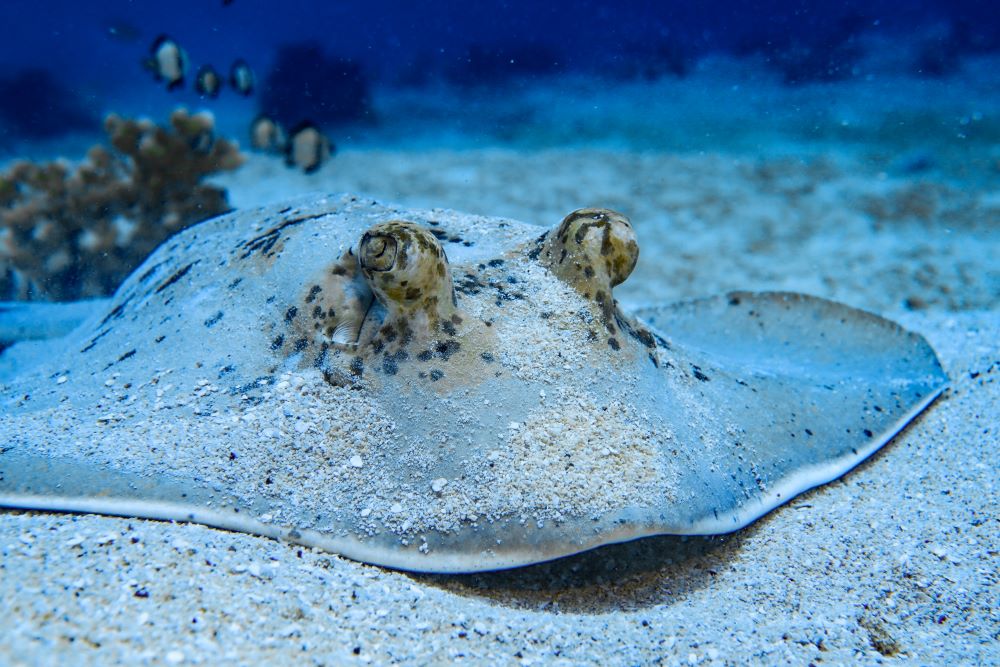
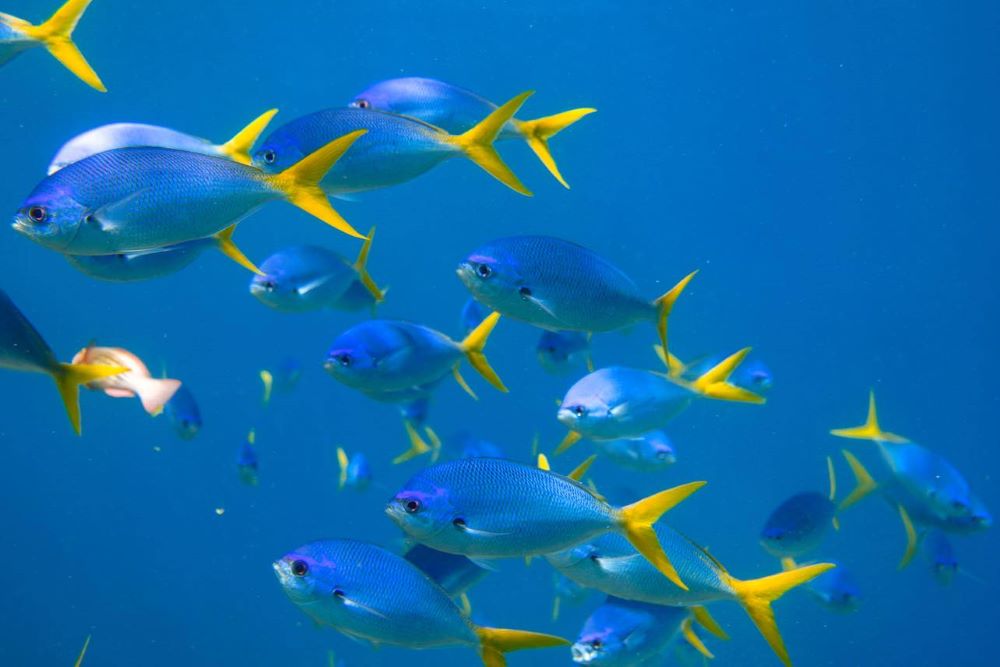
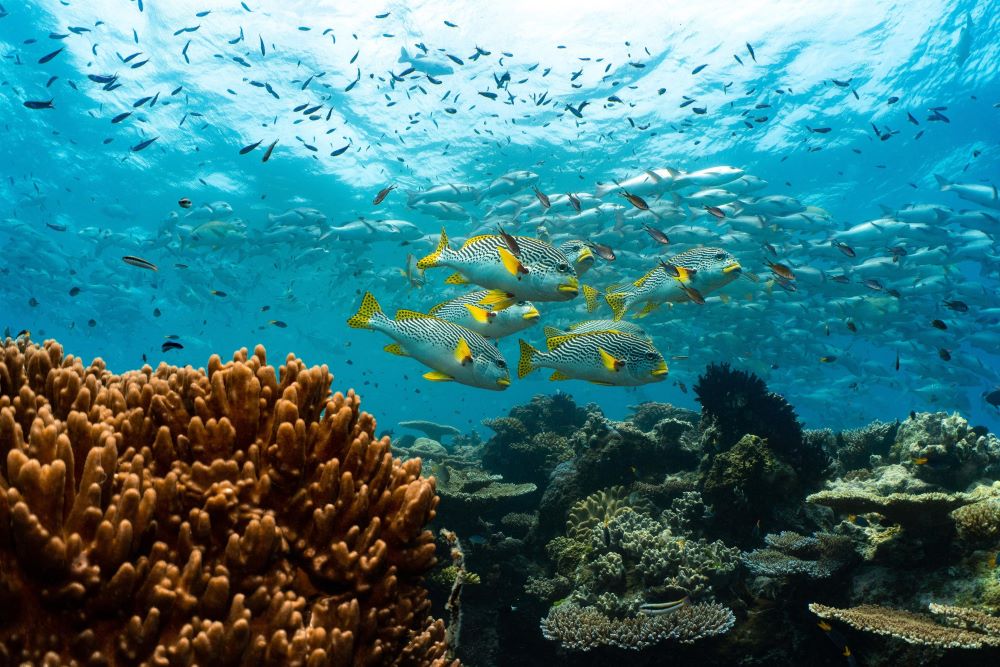
Norman Reef – Troppo’s Site
Troppo’s site is on the very Northern Tip of Norman Reef, and is characterised by vertical reef walls and a shallow sandy bay surrounded by spectacular hard and soft coral formations.
The best shallow snorkelling can be found in the sandy bay cut into the reef wall, where depths reach between 1-8 metres deep and therefore coral is well lit and colourful. The sandy bay is a haven for the shy blue spotted ribbon tail rays and Kuhl’s Lagoon Rays which bury into the sand leaving only their eyes exposed. White tip reef sharks can often be found resting on the sand in the bay. There are many varieties of anemone fish, cousins of Pixar’s Nemo in the corals bordering the bay. It is common to see large although usually solitary fish life including sweetlips, barramundi cod and flowery cods. The bay is almost always calm, and lacking current even in challenging conditions.
The reef wall itself at its shallowest is 3 metres deep and at its deepest reaches depths of 25 metres. The wall is a home to all things macro with orangutan crabs, nudibranchs and pipefish. You will find the odd porcupine fish or lionfish hanging around. Due to the positioning of the reef and tidal movements, Troppo’s wall can experience current and at times surf, this can attract larger life. If you look into the blue you can often see larger life cruising past including reef sharks and turtles and the rare manta ray or exceptionally rare whaleshark, sighted on average once a year.
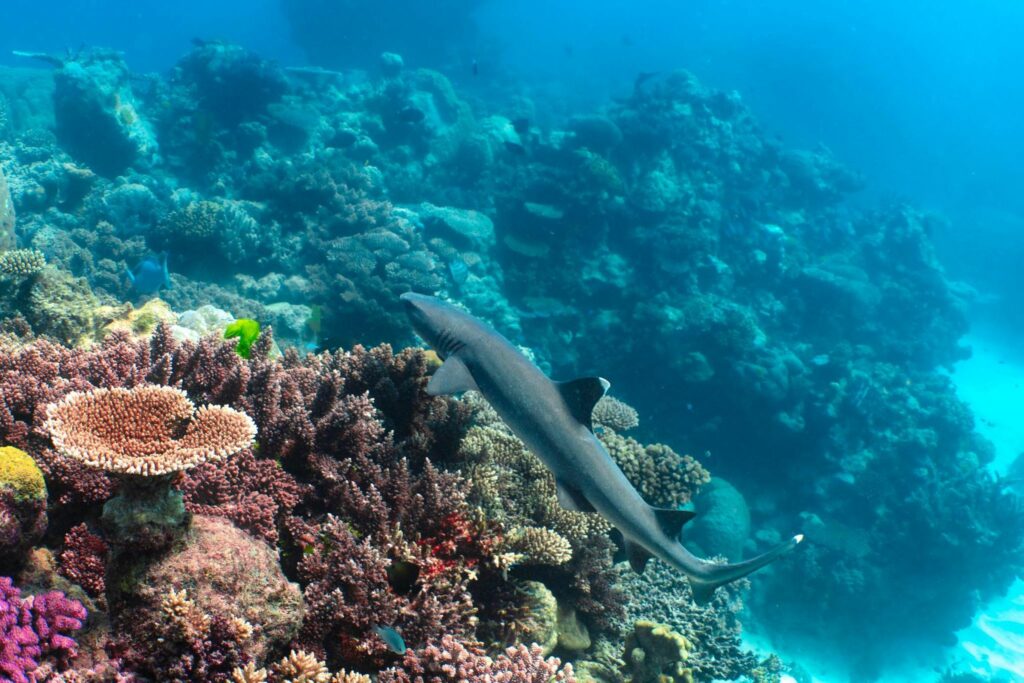
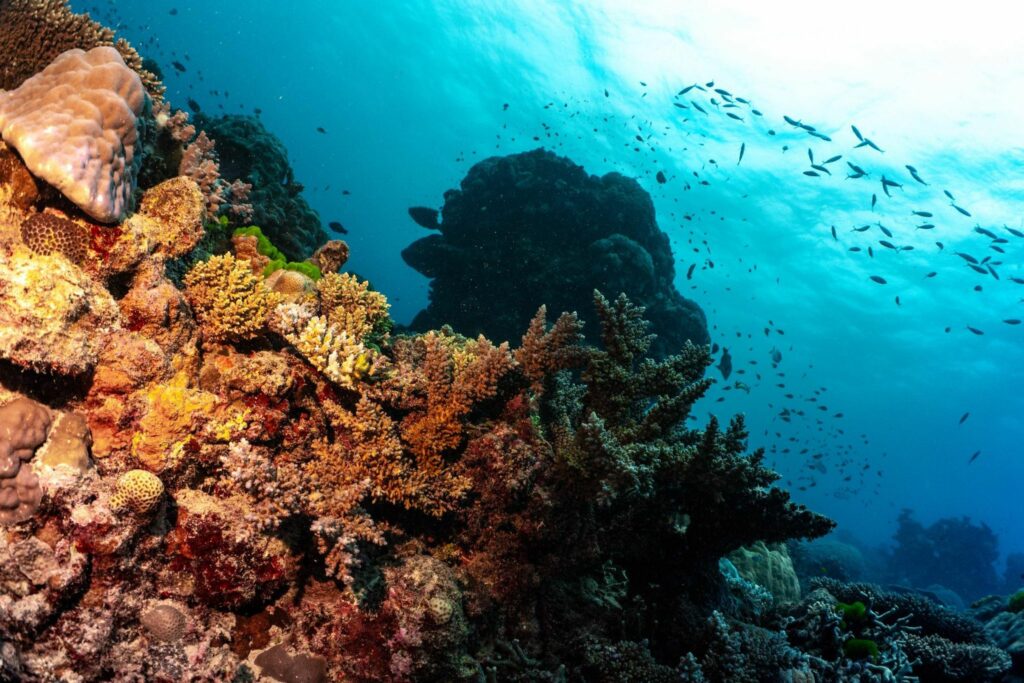
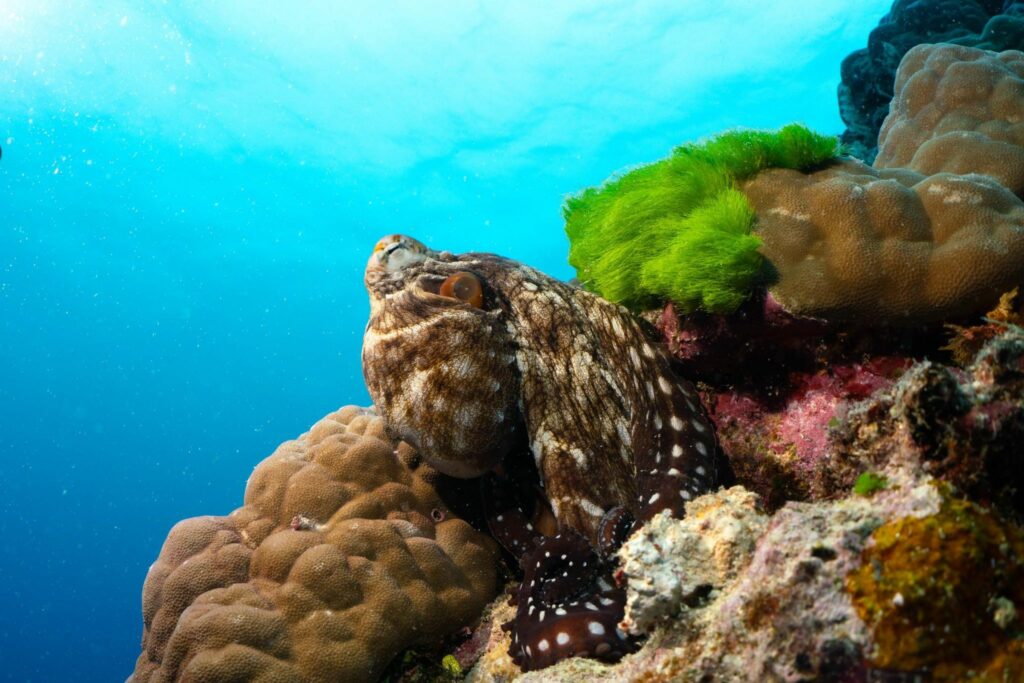
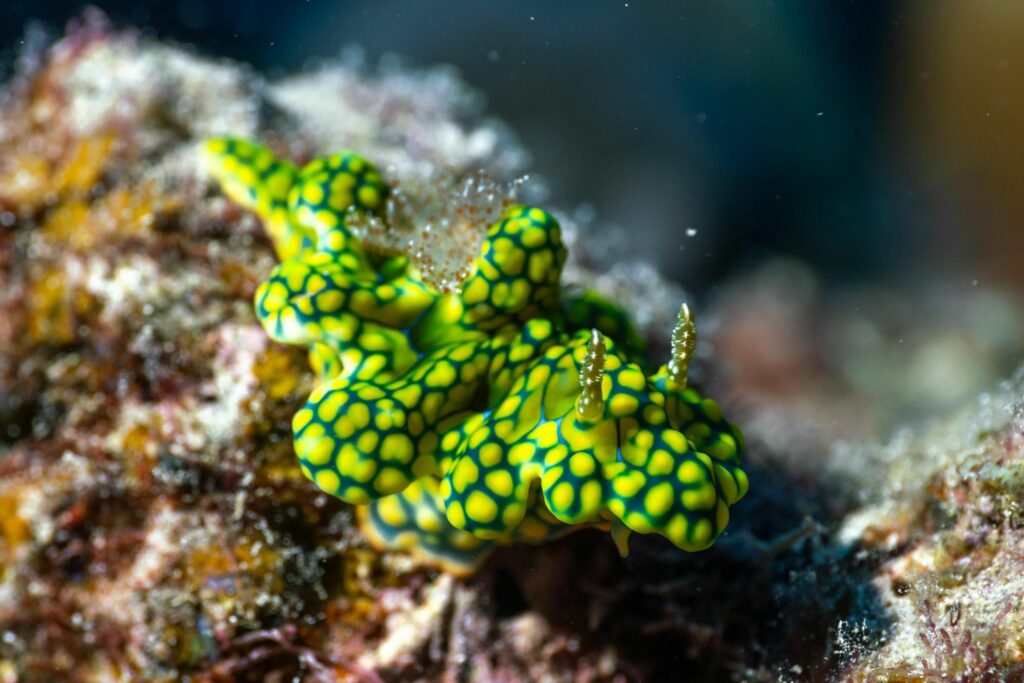
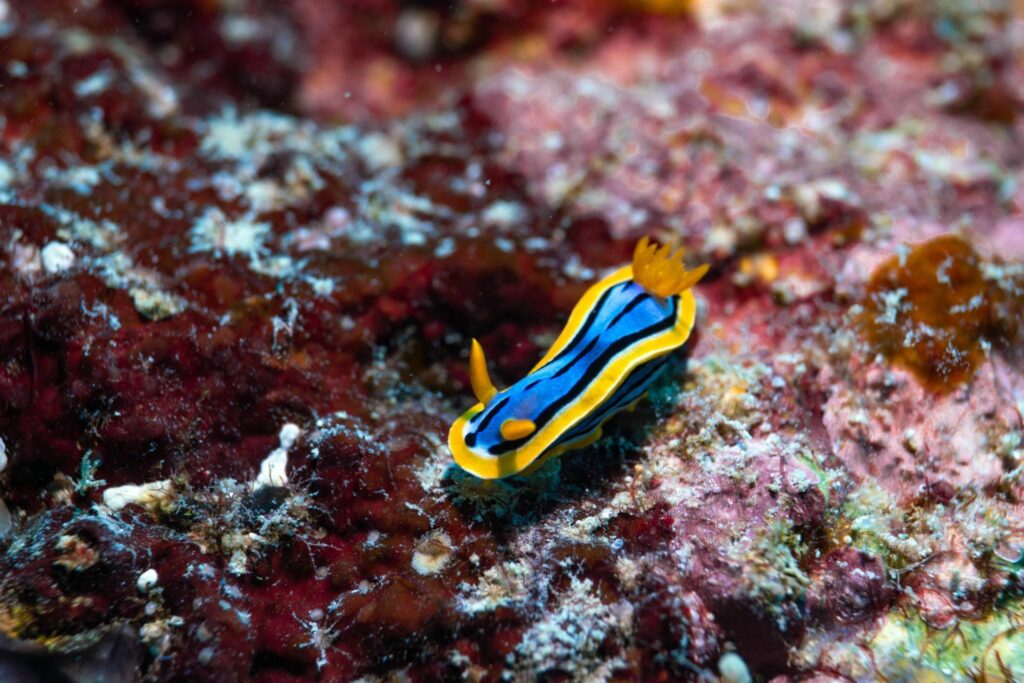
Norman Reef – Caves Site
Caves Site is at the northern end of Norman Reef, this site is characterised as a reef wall, with the top of the reef as shallow as 1-3 m, and drops off steeply to a 25 m+ wall. The wall itself has multiple swim throughs, valleys and caves hence the namesake.
Atop of the reef between 1-5 metres is lots of hard corals as the site is exposed to waves/swell there is lots of bare rock.
There are two sandy patches set back into the main reef, one of the sandy patches has an anemone fish share house, boasting 3 different types of anemone fish. The top of the reef is a hive of activity with many butterfly fish, angel fish, moorish idols and lots of parrotfish including the odd school of bump head parrot fish grazing on the corals.
Nearer the boat, or underneath batfish and red bass come to see what the commotion is about, and if you trace the mooring line down to the concrete blocks at 10 metres you will see a giant clam nearby.
As the wall descends from 5-25 m, there is an increase in macro life, with nudibranchs, orangutang crabs and flatworms common. Also taking shelter in the reef wall is an abundance of porcupine fish, map puffers, moray eels, cod and grouper species.
Looking out to the blue at this site is a good idea, with the uncommon pelagic species cruising past including hammerhead sharks, grey reef sharks, manta rays, eagle rays and a very rare whaleshark.
It is important to note, as a reef wall site this site offers little shelter, and can be vulnerable to swell and waves. It can also experience reasonable current on a tidal change, as the water movement faces little obstruction.
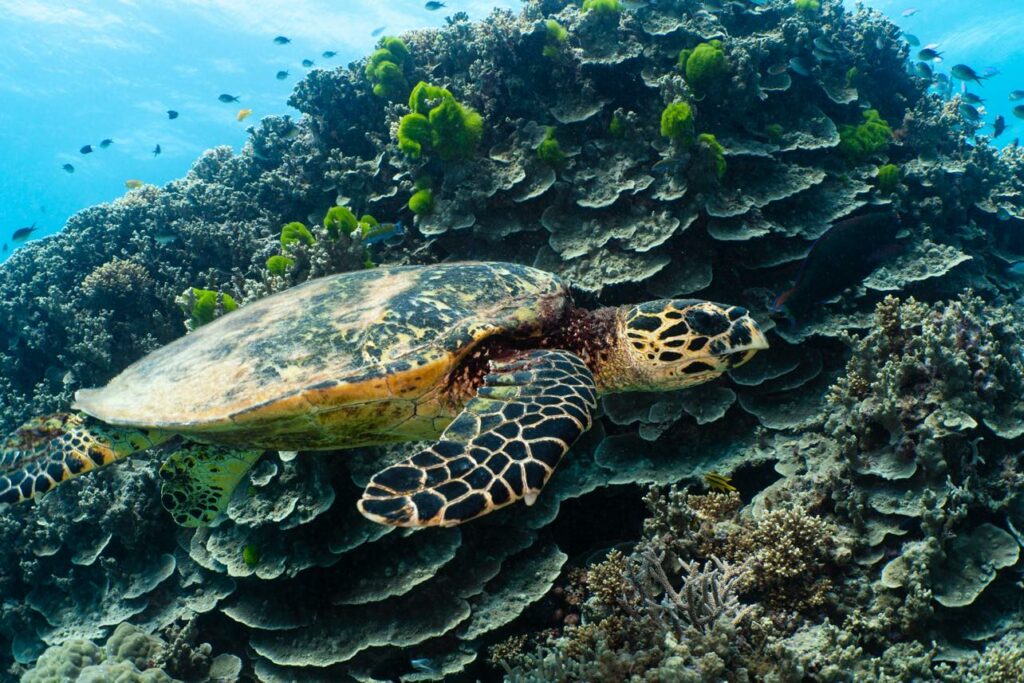
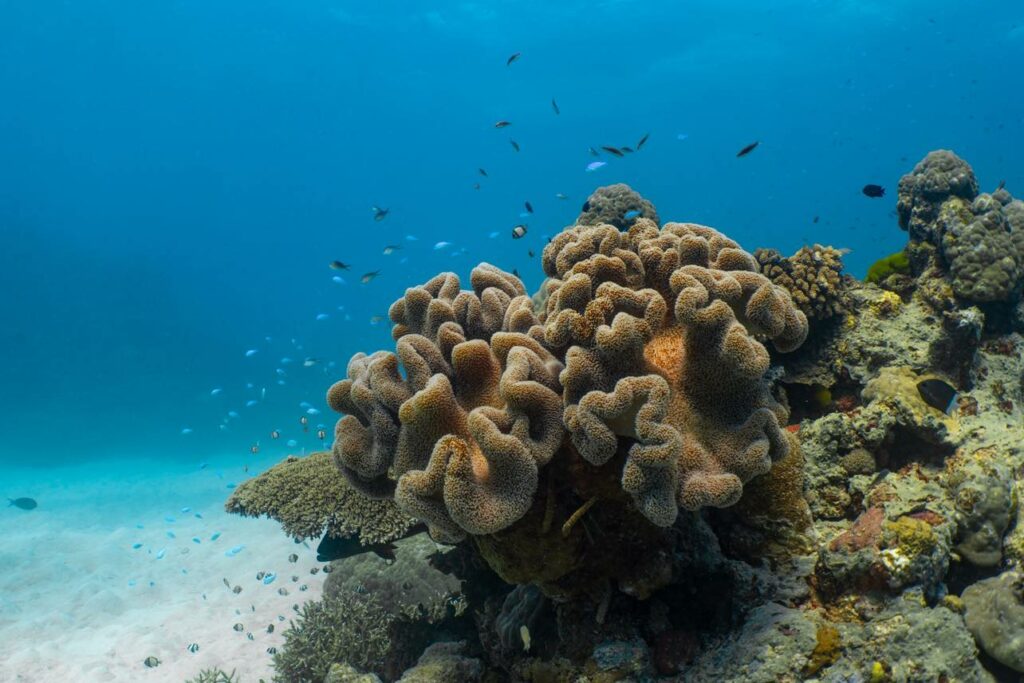
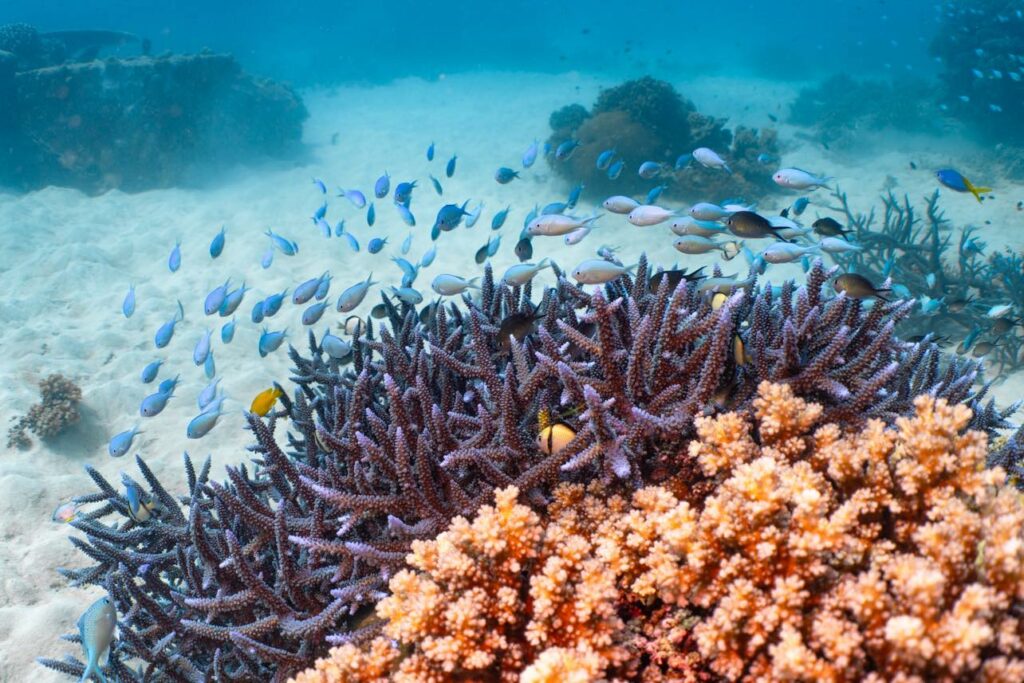
Norman Reef – Shark Mountain
Shark Mountain Site is located at the Southern End of Norman Reef, with a huge bommie known as ‘Shark Mountain’ set apart from the main reef. The fringe of the main reef is a beautiful spot to snorkel offers plenty of shallow colourful corals along the edge of the reef and as it 5-7metres in depth there is lots of sunlight.
The channel between the main reef and the bommie is 5-10m deep and is a sandy channel with scattered stag horn corals. It is often a resting place for white tip reef sharks, small stingrays such as blue spotted ribbon tail rays, and Kuhls lagoon ray and the occasional barracuda.
The bommie or ‘mountain’ itself is 1-2m deep at its highest point, and up to 30 metres at its deepest. It is approximately 20 m wide, 100 m long and is covered in hard and soft corals, starfish, feather stars and at least one anemone with a Clarks anemone fish.
Being positioned off the main reef, the channel and bommie itself can experience strong current and as a result attracts large numbers schooling fish such as sweetlips, red bass, giant trivially, fusiliers, reef sharks, brassy drummers. It is common to see bump head parrot fish, and large species of groupers and cods in the crevices cut into the reef. With fish activity on this scale it is common to see patrolling reef sharks, such as grey reef sharks and whitetip reef sharks cruising below.
Shark mountain is known for being a vantage point to see the odd uncommon pelagic species passing by, including hammerhead sharks, eagle rays, manta rays and in winter humpback whales.
Snorkel Spots Nearby
More Things To Do
- Beginners Guide to Underwater Cameras for Snorkelling - February 14, 2024



